“We have always been here and the Muslims have only been here since the 15th century”
The Serbian mayor of Bratunac in Bosnia and Herzegovina,
( The New York Times, April 22nd, 1993)
This article has to be part of a wider study upon the reasons and the stream of the dissolution of the ex-Yugoslavia. The object of the article is to examine the process of making separate (from Serbian, Croatian, and Montenegrin) Boshnjak (or Bosniak) ethnonational identity by using the technique of “linguistic engineering/surgery” in the process of creation of an independent (from Serbian/Montenegrin and Croatian) Bosnian language as a national language of Bosnian-Herzegovinian and Sandžak’s South Slavic Muslims (former speakers of common Serbo-Croat language). The final aim of the article is to discover/present the ways in which various elements of linguistic diversity within former Serbo-Croat language have been “emblematized” and taken as markers of ethnonational and political identity of Muslim Boshnjaks and multicultural Bosnia-Herzegovina and the region of Sandžak (shared between Serbia and Montenegro since 1913) from 1993 (when an official Boshnjak ethnonational identity was introduced) up today.
The Balkans and languages
From a linguistic point of view, the Balkans (or in more modern expression South-East Europe), appear to be both very fragmented and united. Surely, it is a meeting ground between language families. The Slavonic languages of Bulgarian, Macedonian, Croatian, Slovenian, and Bosnian are similar (in some cases the same) and linguistically can be treated as a single language, like the disparate dialects that were forged into what is today standardized German and English language in the public use. Historically, it did not happen for the sake that Balkan Slavs went to separate state formations that prevented the creation of a single South Slavic (“Yugoslav”) standardized language.[i]
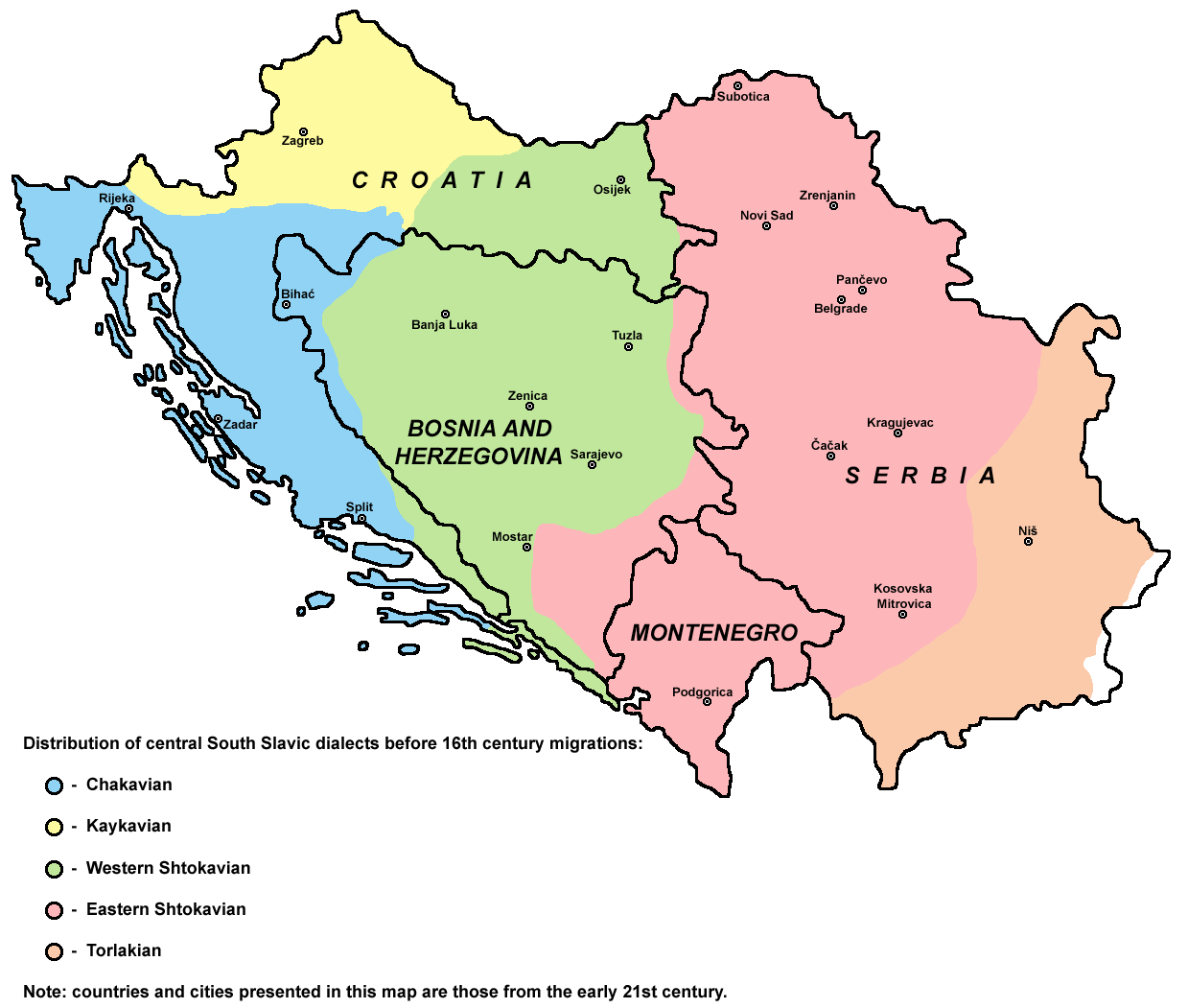 The only success was the proclamation of Serbo-Croat standardized language in both big Yugoslavias (1919–1941/1954–1990) that was at the same time and a natively spoken language of four (out of six) officially recognized nations in J. B. Tito’s Yugoslavia: Croats, Serbs, Montenegrins, and Muslims (today Boshnjaks).[ii] Slovenes and Macedonians have been officially speaking separate languages. In any case, the common Serbo-Croat language was, in fact, the Shtokavian dialect that is unquestionably up today mother tongue of these four nations regardless of how officially it is named after the collapse of the ex-Yugoslav federation in 1991.
The only success was the proclamation of Serbo-Croat standardized language in both big Yugoslavias (1919–1941/1954–1990) that was at the same time and a natively spoken language of four (out of six) officially recognized nations in J. B. Tito’s Yugoslavia: Croats, Serbs, Montenegrins, and Muslims (today Boshnjaks).[ii] Slovenes and Macedonians have been officially speaking separate languages. In any case, the common Serbo-Croat language was, in fact, the Shtokavian dialect that is unquestionably up today mother tongue of these four nations regardless of how officially it is named after the collapse of the ex-Yugoslav federation in 1991.
Even if we can refer to the Balkan case to detached languages from different language groups, the popular speeches of the Balkan inhabitants have experienced a great deal of admixture during the past times and due to the migrations.[iii] Many scholars are inclined to define the Balkans in terms of one or more the so-called “linguistic community”.[iv] Surely, today all “independent” South Slavic languages are belonging to one linguistic community by both linguistic criteria (grammar, morphology, phraseology, lexicon, syntax, orthography) and the level of understanding.[v] The characteristic use of the infinitive verb is often given as an example of a “linguistic community” phenomenon in the Balkan peninsula. It is clear that Balkan peoples greatly influenced each other’s languages.[vi]
Bosnia-Herzegovina and languages
The present-day Republic of Bosnia-Herzegovina is divided between the Croatian-Boshnjak Federation (51%), which is covering the south-western area, and the Serbian Republic (49%), administering the north-eastern provinces of Bosnia-Herzegovina. The Dayton-Paris peace settlement in the fall of 1995 does not recognize the former pre-war ethnic composition according to the last Yugoslav census of 1991. The language of the Serbian Republic (Republika Srpska) is from 1996 defined as Serbian, whereas within the Federation (composed by Boshnjak and Croatian parts) the Croatian and Bosnian are spoken and used in the public life. The practice shows that till the late 1980s mainly it was very difficult to recognize linguistic differences between those three ethnoreligious groups in Bosnia-Herzegovina. However, the 1980s experienced a deeper sociolinguistic practice of making more independent republican and ethno-confessional republican linguistic differences, which finally destroyed the Novi Sad Agreement of 1954 according to which, a single Serbo-Croat language was promoted with two regional variants – Eastern and Western.[vii]
 However, as a result of sociolinguistic policy of differentiating dialects from each other, during the time of the destruction of ex-Yugoslavia in the 1990s, overwhelming majority of the Bosnian-Herzegovinian Muslims accepted Boshnjak (today Bosnian) as their native speech, but only after decisive advice by the leading local ultra-right and nationalistic Muslim (Boshnjak) Party of Democratic Action which fought for the political independence of Bosnia-Herzegovina[viii] and for the Islamization of the whole country.
However, as a result of sociolinguistic policy of differentiating dialects from each other, during the time of the destruction of ex-Yugoslavia in the 1990s, overwhelming majority of the Bosnian-Herzegovinian Muslims accepted Boshnjak (today Bosnian) as their native speech, but only after decisive advice by the leading local ultra-right and nationalistic Muslim (Boshnjak) Party of Democratic Action which fought for the political independence of Bosnia-Herzegovina[viii] and for the Islamization of the whole country.
The relationship between language, nation and state is a part of an ideological composition either in Bosnia-Herzegovina or in the rest of the Balkans (similarly to the majority of European regions). Bosnia- Herzegovina is a Balkan historical province where the consequences of the clash between national ideologies both domestically rooted and imported from outside with more or less autonomous currents of thinking and behaviour have been deep and extreme. The imported ideology of the 19th-century German Romanticism of linguistically rooted ethnonational identity and solving the national-state problem (“Eine sprache, ein folk, ein staat”) fused with more autonomous currents that were heavily imbued with “bloody memories” from WWII and resulted in what is labelled to be “post-Communist nationalism”. Such amalgamation became a basis for the creation of increasingly homogeneous states with the rejuvenation of inter-ethnic intolerance in the most extreme meaning.[ix] The land of Bosnia-Herzegovina is probably the best Balkan example of a crucial interface between language and nationalism. For the purpose that they are separate nations all three major ethno-confessional players in Bosnia-Herzegovina legally proclaimed their own national languages to be disconnected from ex-Serbo-Croat one. That was of especial importance to the Muslim Boshnjaks as without “evidence” that their native language is different from Serbian and Croatian they will hardly convince the international community that they are not originally Serbs or Croats what was of a crucial justification of their claims to live in internationally independent (quasi) nation-state organization.[x]
The Bosnian language
The Bosnian language (de facto of only Muslim Boshnjaks), as a separate and newest (South) Slavic one, was officially inaugurated in 1996 by publishing the book: Senahid Halilović, Pravopis bosanskog jezika (“Orthography of Bosnian Language”) in the capital of Bosnia-Herzegovina – Sarajevo. According to the “Orthography…” (and other similar publications), the Bosnian language has to be different in comparison with “relative” Serbian and Croatian because of the following main (linguistic) reasons:
- The use of phoneme “h” in certain words differently from Serbian, Croatian, and Montenegrin. For instance, the word “coffee” is written and pronounced in these languages as: in Bosnian: kahva; Serbian/Montenegrin: кафа/kafa; Croatian: kava; in Bosnian hudovica (widow), in Serbian/Croatian udovica, etc.[xi]
- Greater use of “Turkish” words (i.e. of Oriental origin) like ahbab (friend); amidža (uncle); adet (custom/habit), akšam (twilight), etc. (all of these words are known in Serbian, Montenegrin, and Croatian but not used regularly).[xii]
- Using of only one form of the Future tense: “ja ću kupiti/kupit ću” (I will buy) that is used in standard Croatian as well, but no use of forms “купићу/ја ћу да купим” as in Serbian/Montenegrin.[xiii]
- The use of Ijekavian sub-dialect of the Shtokavian dialect but not the Ekavian one of the same dialect.[xiv] However, Ijekavian sub-dialect is used in spoken and standard language by all Serbs, Croats, and Boshnjaks westward from the Drina River and by Serbs in West Serbia and by all Slavs in Montenegro.
Nominally, the Bosnian language is written by both Latin and Cyrillic scripts. However, in practice, it is done only by Latin (like Croatian) for the purpose to break any link with the Serbs for whom the Cyrillic script is (by language law) the first, while Latin is the second national alphabet.[xv] It has to be emphasized that Croatian, Bosnian, Montenegrin, and Serbian Latin script is absolutely the same one. In historical context, the native language of the inhabitants of Bosnia-Herzegovina (claimed to be Bosnian one) was written by three alphabets: “latinica” (Latin), “bosančica/bosanica” (Cyrillic) and “arabica” (Arabic). However, what concerns “bosančica”, it is not recognized the fact that this script came to medieval Bosnia from Serbia and during the Ottoman rule was known within the Bosnian Muslim feudal circles as “Old Serbia” up to the mid-19th century.[xvi] At the same time, the Croatian philology claims that “bosančica” is a Croatian national Cyrillic script.[xvii] By “arabica”, undoubtedly, it was written one of the most beautiful profane lyric, religious and fine literature – “književnost adžamijska”.[xviii]

Regardless of official domestic and international recognition of separate Bosnian language from the neighbouring ones, linguistically speaking, grammar and orthography of Serbian, Montenegrin, Croatian, and Bosnian languages are the same what means that linguistic structure of them is not differentiating.[xix] It shows that all four of them have the same origin, the process of development and linguistic essence. Even the fact that there are 8% of lexical differences between them this fact does not make any practical obstacles for inter-understanding in every-day life.
The common link that is connecting in practice and even in literature Bosnian with neighbouring Croatian, Serbian, Macedonian, and Montenegrin languages are circa 3000 Oriental words (“turcizmi”). For many of them, there is no domestic Slavic alternative.[xx]
To be continued
Reposts are welcomed with the reference to ORIENTAL REVIEW.
[i] Stephen Barbour, Cathie Carmichael, Language and Nationalism in Europe, Oxford University Press: New York, 2000, p. 223.
[ii] In the Kingdom of Serbs, Croats and Slovenes (1918–1929) and the Kingdom of Yugoslavia (1929–1941) it was even Serbo-Croato-Slovenian language as the official one, but in the practice, it was split into Slovenian and Serbo-Croat. Spoken Serbo-Croat was more uniformed in 1991 than in 1918 or 1945. Nevertheless, the Serbo-Croat became the basis of current Serbian, Montenegrin, Croatian, and Bosnian language(s). According to Croatian philologist Sito Sučić, the lexical variation between these languages is 3–7% (Sito Sučić, “The Fragmentation of Serbo-Croatian into Three New Languages”, Transition, No. 29, 1996, p. 13). They are mutually comprehensible, and, what is very important, dialect frontiers cut across the state’s boundaries. A reality proved that it is possible that one “nation” (Croat) can have several (three) linguistic spirits (Shtokavian, Chakavian, Kajkavian), that one sub-dialect can be shared by several “nations” (Ijekavian by Serbs, Croats, Montenegrins and Boshnjaks), that one “nation” (Serbs) can have standardized two sub-dialects for their literal language (Ekavian and Ijekavian), and that in one state (Bosnia-Herzegovina) is possible that the same spoken language (ex-Serbo-Croat) is standardized into three separate “national” languages (Serbian, Croatian, and Bosnian).
[iii] Павле Ивић, “Миграције балканских Словена у светлости лингвистичке географије”, Павле Ивић, Изабрани огледи I. О словенским језицима и дијалектима, Просвета: Ниш, 1991, pp. 239–269; Mark Pinson (ed.), The Muslims of Bosnia-Herzegovina. Their Historic Development from the Middle Ages to the Dissolution of Yugoslavia, Harvard University Press: Cambridge, Massachusetts, 1996, pp. 14, 60, 81, 132; Robert J. Donia, John Fine, Bosnia and Herzegovina: A Tradition Betrayed, Columbia University Press: New York, 1994, pp. 37–38, 73.
[iv] For instance, “The language of the Croatians is the Sclavonick somewhat corrupted, but there is very little difference between them. The great extent of this language is something surprising. For it is talked not only here but likewise in Bosnia, Servia, Albania, Dalmatia, Moldavia, Wallachia, Bulgaria, in great parts of Hungary, Bohemia, Poland, Russia and (if one may believe travellers) in Tartary, and almost as far as China: and all these different countries have only so many different idioms of the original language” (“Letter of May 31st, 1737”, Jeremiah Milles’s Letters to the Bishop of Waterford, British Library Add., MS 15,774).
[v] The level of understanding between remote South Slavic provinces is much higher in comparison to the German-speaking remote areas.
[vi] See, for instance, P. Hendriks, The Rodožda Verćani Dialect of Macedonian: Structure, Texts, Lexicon, Lisse: Peter de Ridder, 1976.
[vii] R. D. Greenberg, “The Politics of Dialects among Serbs, Croats and Muslims in the former Yugoslavia”, East European Politics and Societies, No. 10, 1996, pp. 393–415. The text of the 1954 Agreement states that “the national language of the Serbs, Croats and Montenegrins is a single language”. The Muslims/Boshnjaks are still not mentioned as a separate nation as they have been considered at that time only as a confessional ethnicity.
[viii] Sito Sučić, “The Fragmentation of Serbo-Croatian into Three New Languages”, Transition, No. 29, 1996, pp. 10–16.
[ix] See, Vladislav B. Sotirović, “Emigration, Refugees and Ethnic Cleansing in Yugoslavia, 1991–2001 in the Context of Transforming Ethnographical Borders into National-State Borders”, Beginnings and Ends of Emigration. Life without Borders in the Contemporary World. A Collection of Scholarly Essays, Vytautas Magnus University, The Lithuanian Emigration Institute: Kaunas, 2005, pp. 85–108. For the matter of example, the father of the Bosnian Serb army commander, General Ratko Mladić was killed by the Croatian Nazi-fascist party’s military troops – the Ustashi during WWII.
[x] An extraordinary feature of Bosnia and Herzegovina is that it covers the fault lines between three major confessions: Roman Catholicism, Orthodoxy, and Islam. From this point of view, local nationalism(s) are not only ethnic; they are even more confessional ones.
[xi] For instance: Isaković A., Rječnik karakteristične leksike u bosanskome jeziku, Svjetlost: Sarajevo, 1993, p. 6.
[xii] “Lexical differences have been a primary criterion for the establishment of a separate Bosnian language” (R. D. Greenberg, “Dialects and Ethnicity in the Former Yugoslavia: The Case of Southern Baranja (Croatia)”, The Slavic and East European Journal, vol. 42, № 4, winter 1998, p. 717).
[xiii] However, both Serbs from East Herzegovina (regularly) and West Serbia (in many cases) are using future tense construction “ja ću kupiti/kupit ću” like in standard Bosnian and Croatian.
[xiv] The former Serbo-Croat language was composed of (officially) three dialects: Chakavian, Kajkavian, and Shtokavian. The last one became a standardized literal language for Serbs, Croats, Montenegrins, and Muslims/Boshnjaks. The Shtokavian dialect was/is subdivided into three sub-dialects: Ijekavian (mlijeko = milk), Ikavian (mliko) and Ekavian (mleko). Ikavian is not standardized.
[xv] Similar policy of using the alphabet in the Bosnian language was pursued by the Austro-Hungarian authorities in Bosnia-Herzegovina, 1878–1918 (С. Танасић, “‘Босанска вила’ о српском језику”, Јужнословенски филолог, № LV I/1–2, Београд, 2000, p. 1167; Ranko Bugarski, Jezik u kontekstu, Beograd, 1997, p. 35).
[xvi] Upon Serbian claims see, Иван Вуковић, Лазо М. Костић, Истина/Чија је Босна, Добрица књига: Нови Сад, 1999, pp. 21–56.
[xvii] Upon Croatian claims see, Milan Moguš, A History of the Croatian Language: Toward a Common Standard, Nakladni Zavod Globus: Zagreb, 1995, pp. 27, 53.
[xviii] Besides these mentioned, historically, on the territory of Bosnia and Herzegovina have been used and Glagolitic and Greek scripts.
[xix] According to the Constitution of Bosnia-Herzegovina, official languages are Bosnian, Serbian, and Croatian. Such a constitutional-linguistic situation in Bosnia-Herzegovina is quite similar to the Swiss one – Italian, French, and German (plus Romansh, spoken by the very small community).
[xx] During the Bosnian civil war of 1992–1995, the Bosnian Serbs tried unsuccessfully to purify their language by the elimination of the “Turkish” words. However, in many cases, it was impossible without the creation of new neologisms (ex: čarape=socks, šećer=sugar, pamuk=cotton, etc.). It is interesting that the common nickname for the Bosnian-Herzegovinian Muslims given by local Christians, but also and as a group name used by the Bosnian-Herzegovinian Muslims to identify themselves, was Turci (Turks). The Bosnian-Herzegovinian Christians used and the term poturice (those who became Turks). The Bosnian-Herzegovinian Muslims, on the other hand, called the real Turks (the Turkish language speakers) from Anatolia as Turkuše or Turjaši.
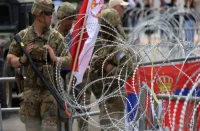
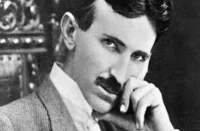
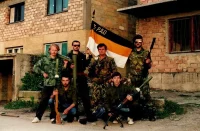



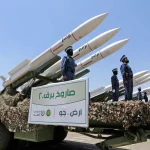







Comments